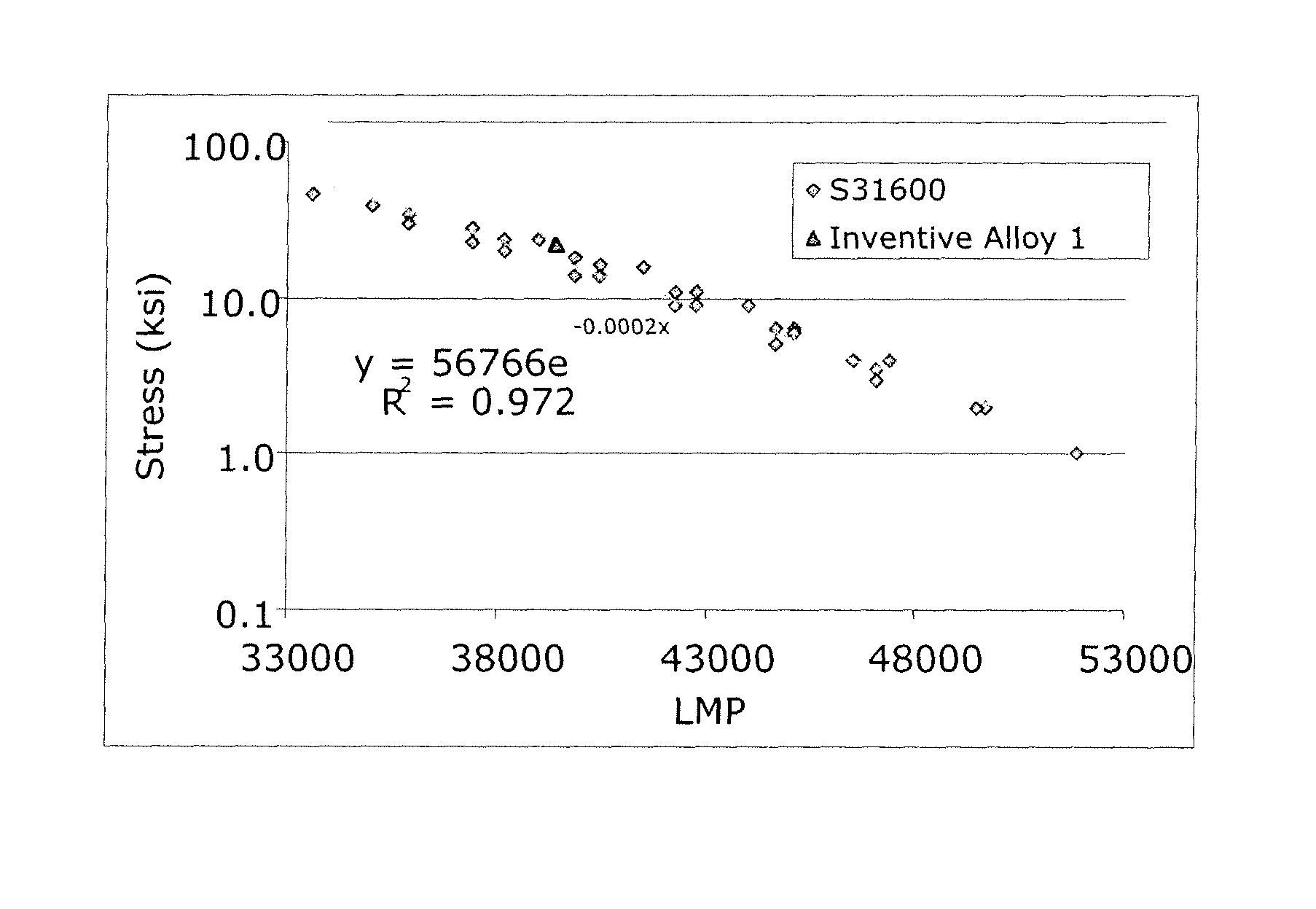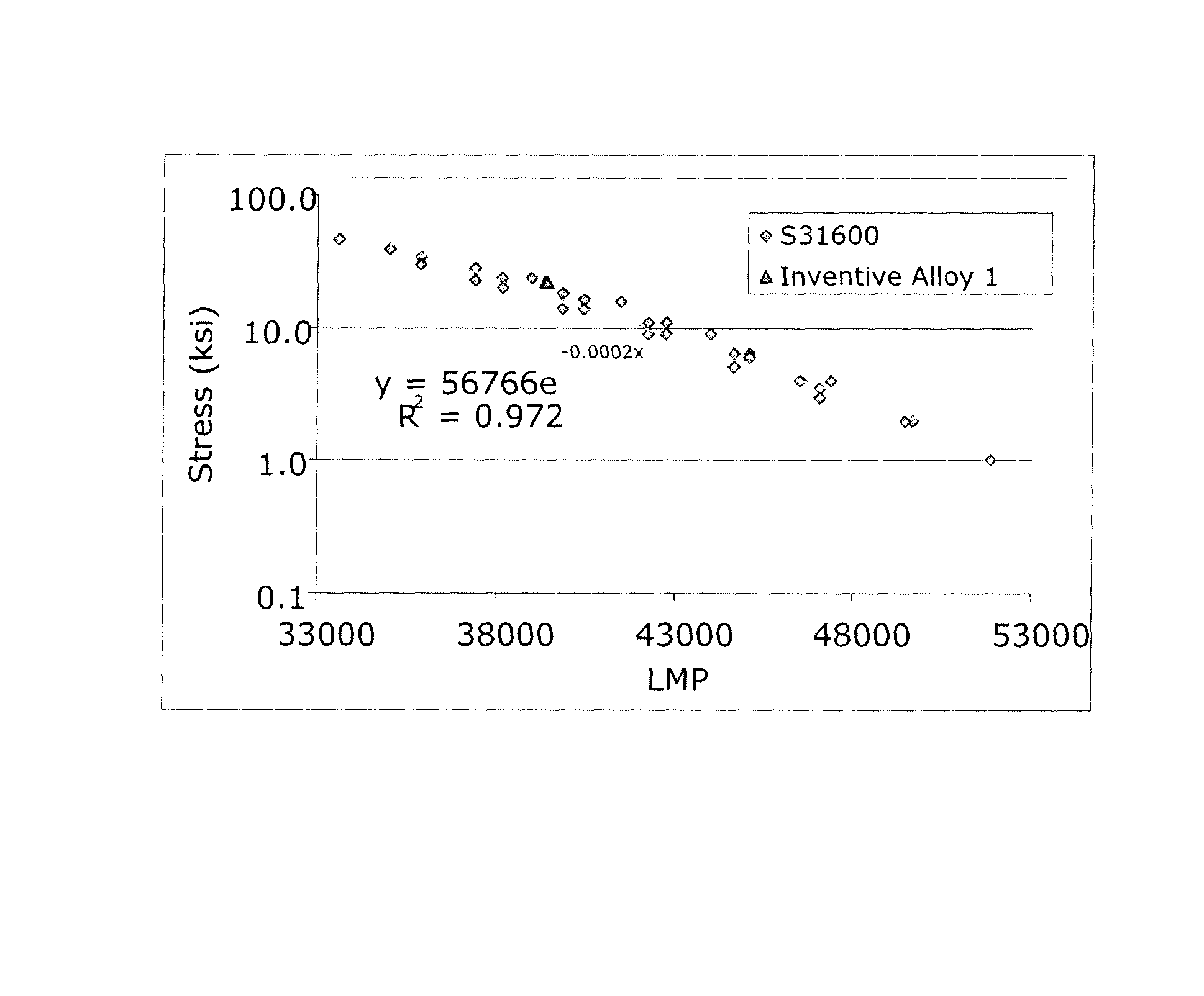Lean austenitic stainless steel
a technology of stainless steel and austenitic steel, applied in the field of austenitic stainless steel, can solve the problems of poor formability, high strength and lower ductility, and inability to form, and achieve the effect of reducing cost, reducing cost, and reducing cos
- Summary
- Abstract
- Description
- Claims
- Application Information
AI Technical Summary
Benefits of technology
Problems solved by technology
Method used
Image
Examples
examples
[0044]Table 1 includes the actual compositions and calculated parameter values for Inventive Alloys 1-11 and for Comparative Alloys CA1, S31600, S21600, and S20100.
[0045]Inventive Alloys 1-11 and Comparative Alloy CA1 were melted in a laboratory-size vacuum furnace and poured into 50-lb ingots. These ingots were re-heated and hot rolled to produce material about 0.250″ thick. This material was annealed, blasted, and pickled. Some of that material was cold rolled to 0.100″-thick, and the remainder was cold rolled to 0.050 or 0.040″-thick. The cold rolled material was annealed and pickled. Comparative Alloys S31600, S21600, and S20100 are commercially available and the data shown for these alloys were taken from published literature or measured from testing of material recently produced for commercial sale.
[0046]The calculated PREW values for each alloy are shown in Table 1. Using the equation discussed herein above, the alloys having a PREW greater than 24.1 would be expected to have...
PUM
| Property | Measurement | Unit |
|---|---|---|
| temperature | aaaaa | aaaaa |
| temperature | aaaaa | aaaaa |
| temperature | aaaaa | aaaaa |
Abstract
Description
Claims
Application Information
 Login to View More
Login to View More - R&D
- Intellectual Property
- Life Sciences
- Materials
- Tech Scout
- Unparalleled Data Quality
- Higher Quality Content
- 60% Fewer Hallucinations
Browse by: Latest US Patents, China's latest patents, Technical Efficacy Thesaurus, Application Domain, Technology Topic, Popular Technical Reports.
© 2025 PatSnap. All rights reserved.Legal|Privacy policy|Modern Slavery Act Transparency Statement|Sitemap|About US| Contact US: help@patsnap.com


